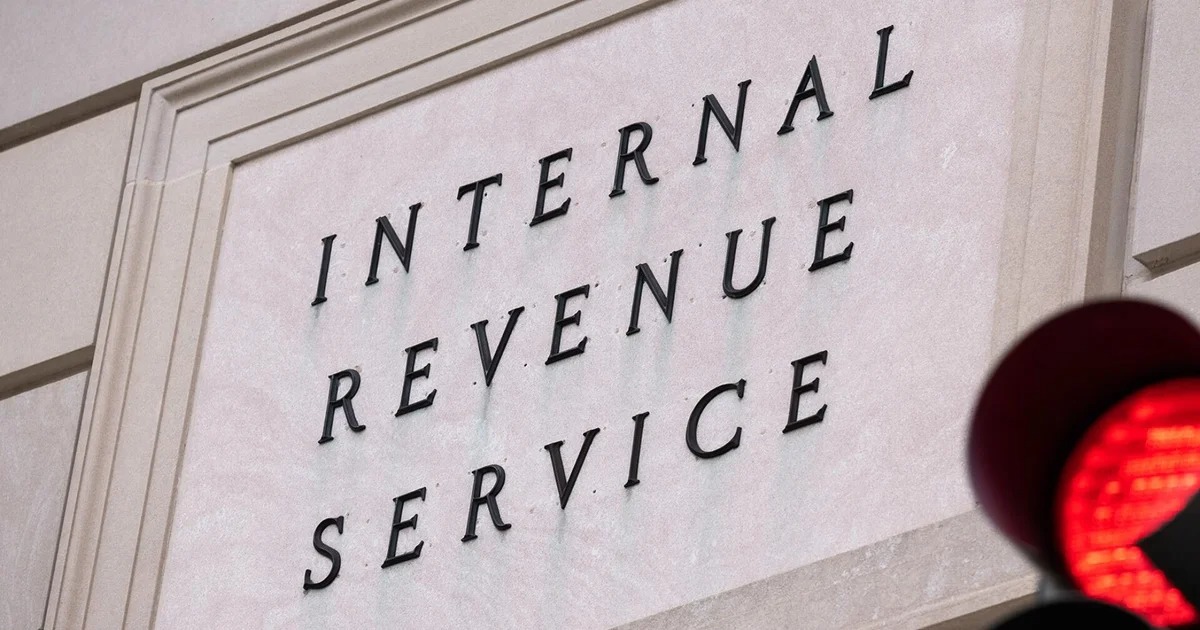
The IRS is facing the most dramatic revenue shortfall in over a decade. And it’s happening in plain sight.
As Tax Day looms, top officials are warning that federal tax collections could plunge by more than 10 percent compared to last year. That’s not a rounding error—it’s over $500 billion in missing revenue. For context, that’s more than half of the annual defense budget.
So, what’s happening inside America’s tax engine?
Sources inside the agency and Treasury Department point to a toxic cocktail of aggressive staff cuts, growing public mistrust, and a sharp uptick in taxpayer noncompliance—some of it deliberate.
“This isn’t just a bad year. It’s a breakdown,” said Natasha Sarin, president of the Yale Budget Lab and a senior Biden administration tax official. “The idea of doing that in one year, it’s hard to grapple with how meaningful of a shift that represents.”
Since President Donald Trump returned to office, the IRS has seen nearly 20,000 positions eliminated, including 11,000 already dismissed, mostly from enforcement and customer service. The head of compliance just stepped down. Two IRS commissioners have resigned. And sources say investigations into wealthy corporations have been shelved simply to keep the lights on.
It’s all part of a broader effort, backed by a new administration and some in Congress, to shrink what they see as a bloated agency. But the result has been something very different: a logistical collapse at the heart of federal revenue collection.
In a 68-slide presentation obtained by The Washington Post, senior tax officials warned the Trump transition team back in January that abrupt cuts would cause backlogs, lower collections, and “diminished capacity to build next-generation digital capabilities.” Their recommendation? Gradual downsizing, paired with increased automation.
Instead, the IRS finds itself trying to run a 21st-century tax system with skeleton crews and outdated tools.
“The IRS is pursuing a vision of digitalization and automation which will increase the speed and quality of its processes while reducing the overall IRS footprint,” the presentation states. “In the past, we have increased our staffing levels to improve taxpayer assistance, tax assessments, and collection processes. However, once modernized, our staffing footprint can be reduced while maintaining performance.”
The number of filed returns is down 1.7% year-over-year, according to weekly IRS reports. But that’s just the tip of the iceberg. The real damage, say insiders, lies in the intentional underpayment or skipping of balances owed—a risk many taxpayers are apparently willing to take.
IRS officials have flagged a spike in online forums where individuals boast about avoiding taxes this year, banking on the assumption that audits are unlikely. Others are claiming aggressive credits or deductions they probably don’t qualify for.
And in an unusual twist, the IRS is also navigating a controversial new information-sharing deal with Immigration and Customs Enforcement (ICE)—raising privacy concerns and further eroding trust among certain groups of taxpayers.
Some might assume this shortfall stems from economic decline. But that’s not the case. The U.S. economy grew 2.8% last year, and no major tax laws changed heading into this filing season. In fact, officials were expecting collections to rise.
“There’s no reason to anticipate this based on the economic year we had in 2024,” said Dorothy A. Brown, who studies tax policy and racial disparities at the Georgetown University Law Center.
Natural disasters like the Los Angeles-area wildfires may account for some delays in filings, especially from high-income earners. And yes, some filers will push their paperwork to October via extensions. But experts agree: these don’t explain a half-trillion-dollar gap.
The IRS collects 95% of all federal revenue. If it falls short, Congress either has to slash spending or borrow more, adding to the $36.2 trillion national debt. That impacts everyone. Especially business owners who rely on government services, infrastructure, or regulatory stability.
Even now, signs of service degradation are surfacing. Just 85% of callers to IRS helplines are reaching a human—down from nearly 94% last year. Systems are slowing. Refunds are trickling in later for some. And more than a few businesses are wondering whether the IRS will be watching at all if they cut a few corners.
For small business owners, it raises uncomfortable questions. What happens when tax enforcement becomes a gamble? What happens when public services are underfunded because half a trillion in revenue vanished?
It’s not just about one agency falling apart. It’s about the signal that it sends to the rest of us.
For the latest news updates, click here.
Share this article: